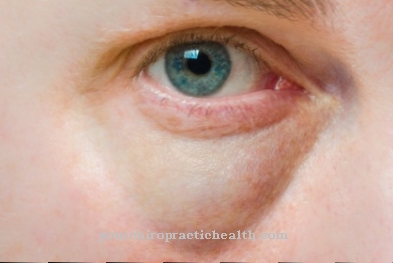Wheals are small swellings of the skin and are one of the most common symptoms of human skin reactions that are based on a complex series of chemical processes in the body. Up to 20% of the population suffer from harmless wheals at least once in their life.
What are wheals?

Wheals are circular, red, spongy lesions on the skin that develop over minutes to hours. Usually they are surrounded by an area of redness. Wheals can vary in size from a few millimeters to huge swellings that can cover an entire limb.
They can be found on every surface of the skin, but usually the palms and soles of the feet are not affected. Wheals usually disappear after some time, so a distinction is made between acute and chronic wheals depending on the length of the infestation. The skin swelling results from increased storage of fluid in the cells due to the increased permeability of blood vessels in the skin, caused by an increased release of histamine. Therefore, wheals are usually associated with severe itching.
causes
Wheals caused by allergies can be traced back to food, plants, insect bites, medication, or cosmetics. The foods that produce wheals include eggs, milk, nuts, fish and shellfish, berries, chocolate, or tomatoes.
While coffee, alcohol and tobacco are less likely to cause acute conditions, these substances can aggravate them in people with chronic wheals. Almost any drug can cause wheals, often including anti-inflammatory drugs (e.g. ibuprofen or acetylsalicylic acid), antibiotics such as penicillin, anti-epileptic drugs, or anesthetics.
Soaps, perfumes and lotions, as well as jewelry or latex containing nickel, can cause reactions. Since wheals are external effects of the body's defense processes, they can also appear as a result of various infections. Around 5% of the population is also prone to wheals due to physical skin irritation, i.e. as a result of scratching or exposure to the sun.
Diseases with this symptom
- Hives (urticaria)
- Contact allergy
- Cat allergy
- Histamine intolerance
- Nickel allergy
- Sun allergy
- Food allergy
- Lice infestation
- House dust allergy
Diagnosis & course
Acute wheals usually aren't visible for more than 24 hours, but in some cases the condition can last up to 6 weeks. A condition is only referred to as chronic beyond this period. Sometimes there is also fatigue, headache and high temperature. The more histamine and other endogenous anti-inflammatory agents are released into the layers directly under the skin, the greater the swelling of the wheals, and itching can turn into mild pain.
This condition is called angioedema and can appear as swelling of the lining of the mouth, intestines, genitals, or throat. A diagnosis of wheals will mostly relate to clarifying possible causes of the allergic reaction (detailed survey). Chronic wheals can indicate thyroid disease or rheumatoid arthritis. In this case, specific routine diagnostic tests are carried out.
Complications
Wheals arise from various causes, but mostly they arise as part of an allergic reaction. These can also have various complications. In addition to the typical wheals, an allergic reaction also causes severe reddening of the skin and severe itching. There is also nausea and vomiting.
A swelling of the airways is also characteristic, so that they and the esophagus are narrowed. This leads to difficulty breathing and swallowing, which can lead to suffocation. Quincke's edema is a dreaded complication of hives. There is also swelling of the deeper layers of the skin, as well as the face and hands and feet, as well as the genitals.
This also leads to severe swellings in the head area and the shape of the face is greatly changed. This also leads to life-threatening [[shortness of breath9]. The most severe form of allergic reaction is anaphylactic shock. The affected person has a massive drop in blood pressure and an increase in heart rate.
This leads to a lack of blood flow to important organs, which can die in the course of the process. In addition, it can lead to dizziness or even fainting, which can even lead to death. Some infectious diseases, such as measles, can also cause wheals. Complications of measles are otitis media, pneumonia and a rare but life-threatening brain inflammation (encephalitis).
When should you go to the doctor?
The sudden appearance of wheals on the skin can be worrying. In most cases, however, this itchy redness is harmless and will go away as quickly as it came on. This happens, for example, when they are triggered by stress, insect bites or mild allergic reactions. In some cases, however, a doctor's visit is necessary.
If the wheals remain on the skin for weeks, they can be a sign of chronic hives. Then a dermatologist should be consulted who can initiate appropriate treatment. The reddening can also indicate a strong allergy, which can be life-threatening - for example, if you react to a drug such as penicillin or certain foods. In such a case, a doctor or the hospital should be consulted immediately.
An insect bite can also be dangerous, for example a tick bite. A general practitioner or dermatologist should examine this so that no serious illnesses such as borreliosis can develop. If a ring-shaped reddening develops around the bite, a doctor's visit is absolutely necessary. It is essential to avoid scratching wheals to prevent dirt from getting into the wound and causing infections. If inflammation is suspected, a doctor should also be consulted.
Doctors & therapists in your area
Treatment & Therapy
A doctor should only be consulted immediately if wheals with dizziness and difficulty breathing, combined with a swelling of the throat, occur. In milder cases, the main thing is to cleanse the body's fluids and relieve itching.
Itching ointments or sprays as well as simple home remedies such as lemon juice or cooling are suitable for this. If the area spreads over a large area, sweat baths with valerian or chamomile stock followed by cold pouring are recommended. For detox it is recommended to fast and drink plenty of vegetable juices or herbal teas.
Because the causative factor cannot be determined in the majority of chronic wheal cases, antihistamines are the mainstay of treatment for these patients. These need to be taken regularly to prevent the release of histamine. Newer drugs such as Zyrtec, Claritin or Allegra are well tolerated and hardly cause any typical side effects such as drowsiness.
If the antihistamines do not work, oral steroids such as prednisone or Medrol are used. Severe cases of wheals can be treated with injections of adrenaline (a decongestant).
Outlook & forecast
In most cases, the wheals lead to itching and thus to a very reddened skin on the affected area. The patient should not scratch himself under any circumstances, as scratching only increases the itchiness. If the wheals occur due to an allergy or an intolerance, they usually disappear on their own after just a few hours and do not lead to any further problems. This also applies to contact with plants or insect bites.
Medical treatment is not necessary in these cases. If the wheals stay longer on the skin, a doctor must be consulted. Treatment is mostly done with the help of drugs or creams. The affected area on the skin can also swell. The swelling can be counteracted by cooling.
If the food in question cannot be avoided in the event of an intolerance, an allergy drug must be taken or a substitute found. Surgical intervention is not possible with wheals. Scratching the skin can leave wounds or scars and should therefore not be used.
prevention
Prevention is the best treatment for wheals. As soon as the triggering factors (triggers) for wheals can be determined, these foods, cosmetics, or medications should be avoided. Under certain circumstances, this can mean a complete change in life. Appropriate clothing is recommended to avoid wheals caused by insects or plants (e.g. nettles).
You can do that yourself
A number of home remedies and measures can help against wheals. First of all, the irritated areas of the skin should be cooled with cold compresses. Baking soda will relieve itching and counteract the rash. Mixed with water to form a thick paste, it is applied directly to the wheals and rinsed off with water after 30 minutes. Alternatively, a bath with a cup of baking soda will help.
Turmeric is also a natural home remedy for hives. The substance is taken two to three times a day or applied to the wheals and should provide rapid relief. Other home remedies include nettle, basil, peppermint and apple cider vinegar. Aloe vera and healing earth are also suitable as quick means for self-help due to their anti-inflammatory effects. Further skin irritation can be prevented by clothing made of natural fibers.
If an intolerance or allergy is suspected, a bio-detergent without optical brighteners and perfume should be used. It is also advisable to reduce stress and psychological stress and to avoid hot baths and direct sunlight. If the hives persist for more than a week, a doctor should be consulted immediately.



























